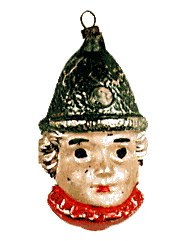

|
The glass ornaments that we associate with Christmas today are among the most
recent types of decorations to hang from evergreen boughs. In the early 1800's
-- a time when Christmas trees in Germany were typically decorated with
candles, cookies, fruit, paper novelties, and candy -- a glassblower in Lauscha
created a collection of small glass balls to hang on his family's tree.
|
|
Within a matter of years, glassblowers in Lauscha (a district long recognized
for the quality of its glass) were filling orders not only for glass balls by
the thousands but for hollow glass ornaments either molded or free-blown into
the shapes of pinecones, fruit, flowers, animals, and birds. In 1880, glass
Christmas ornaments from Lauscha were introduced to America by F. W. Woolworth
(1852-1919), whose five-and-dime stores populated Main Streets across the
country. Skeptical of their appeal at first, Woolworth later estimated that he
had made $25 million just on the sale of inexpensive glass Christmas ornaments
for American homes.
|
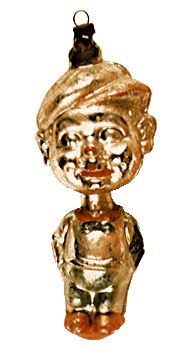
|
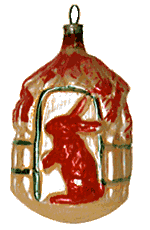
|
Germany dominated glass ornament production until 1939, when the Second World
War closed the country's glass factories. By the time Europe's glassblowers
recovered, American manufacturers had captured the domestic market. Postwar
America demonstrated a preference for uniform, single-color balls over the
unique, often irregular hand-blown ornaments made in Germany. More recently,
however, many of the old molds and original techniques have been resurrected by
German glassblowers as the demand for historically accurate Christmas ornaments
has continued to increase each year.
|
|
Margaret and Kenn Whitmyer, authors of
Christmas Collectibles
(Collector Books, Paducah, Ky.; 2nd edition, 1994; $24.95) advise, "Collectors
who are willing to spend large sums of money on ornaments need to be well
informed about what is currently being made. They also need to know how to
differentiate between old and new ornaments. One of the most significant
differences is in the weight of the glass. Older ornaments are normally
lightweight and have a very thin wall."
|
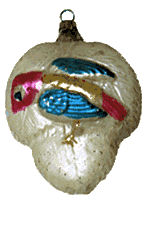
|
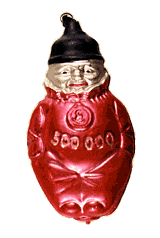
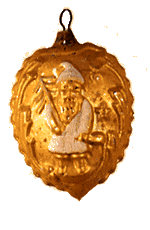
|
In comparison to early German ornaments, American designs seem plain and
unimaginative. Collectors of glass ornaments are generally drawn toward those
that were hand-blown by German families.
|
|
Among the most popular figures with collectors today are those of animals.
Bears were popular with the American public during and after the presidency of
Theodore Roosevelt. Enough variations were produced over the years to enable
some collectors to specialize solely in glass bear ornaments, some of which
command prices in the $100 to $300 range.
|
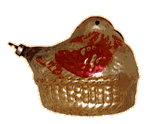
|

|
Glass birds have always remained popular Christmas ornaments, in part because
birds seem natural in trees. Glass birds--often as colorful, as old, and as
attractive as bears--are far more plentiful than bear ornaments and are
available for today's collectors at lower prices.
|
|
Collectors judge glass ornaments using a variety of criteria, of which the most
important is condition. Ornaments that are cracked, damaged, or missing paint,
unless extremely rare or old, will hold little attraction for a collector. Size
is also a consideration for many collectors, as larger ornaments are rare.
|
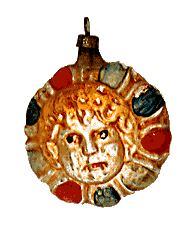
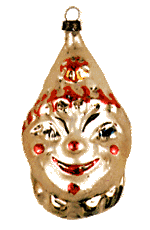
|
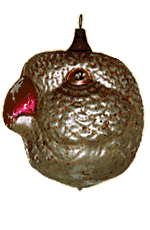
|
Although production records were not kept, collectors have learned that certain
forms are more plentiful than others. Birds, musical instruments, and fish
appear frequently and are valued less than rare unique forms. The exception to
this rule is the Santa Claus figure. With hundreds of thousands of variations
produced, the Santa Claus is the single most sought after form; the market for
even ordinary ornaments bearing his likeness is very strong.
|